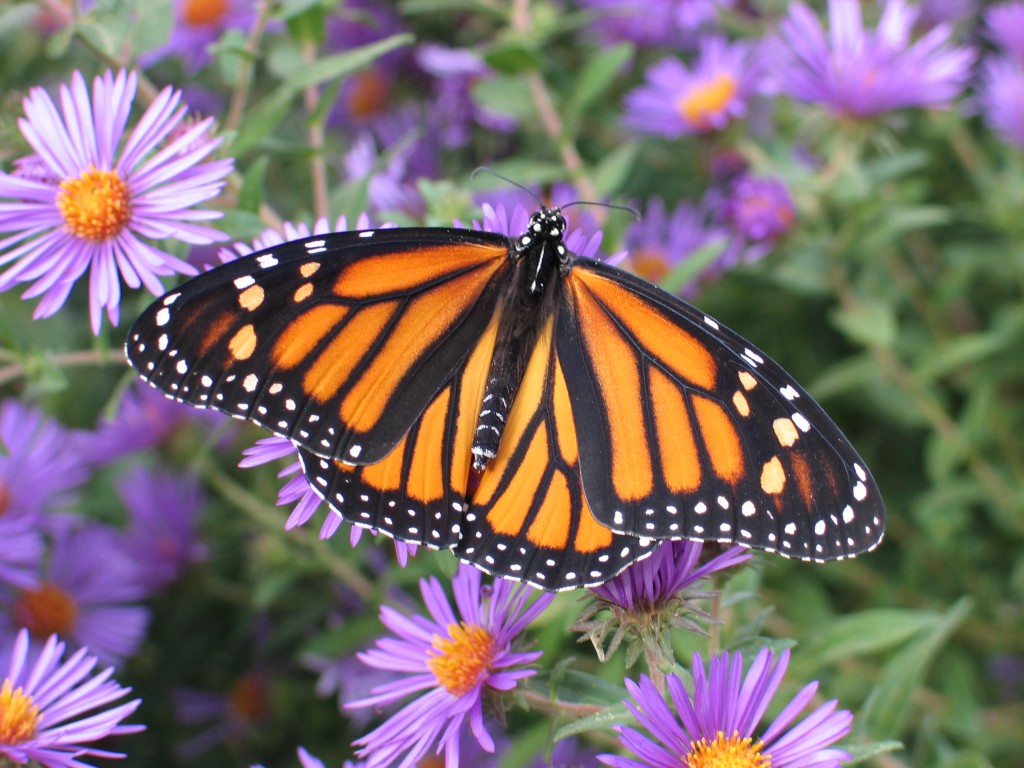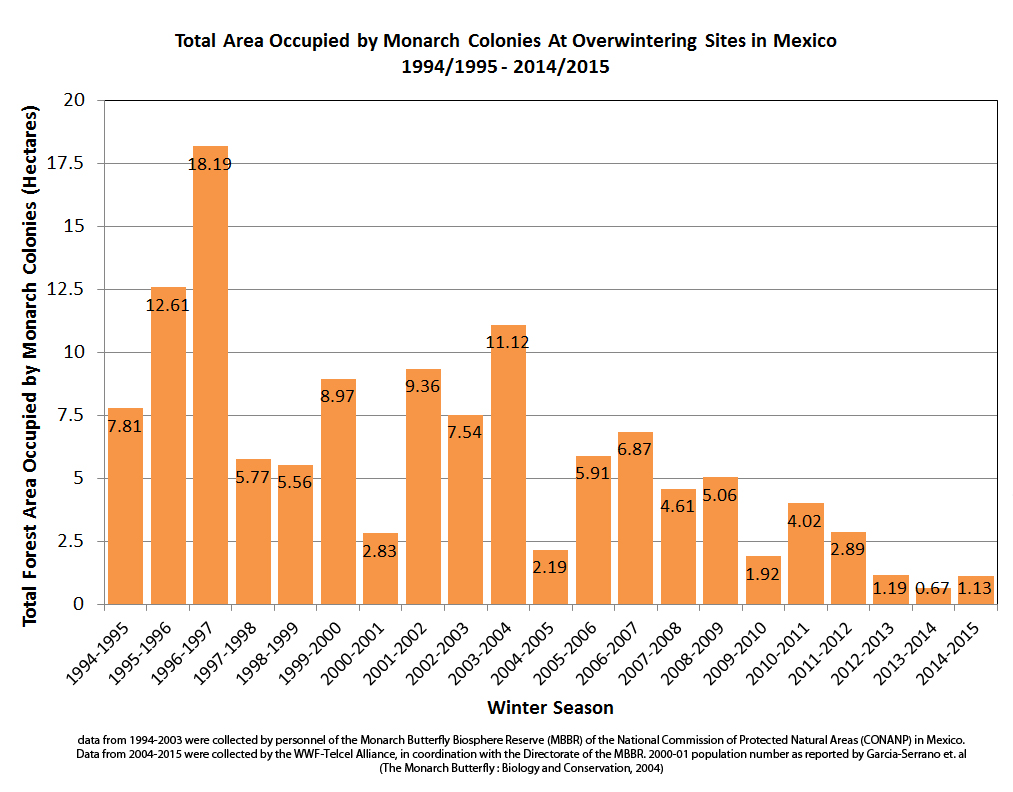Monarchs ingest toxic cardiac glycosides when their larvae eat milkweed leaves and advertise through their adult warning coloration: “look out for me…I’m poisonous!” The U.S. Fish and Wildlife Service may very soon be issuing its own warning on behalf of declining populations for this bright butterfly under the banner of the Endangered Species Act (ESA). A petition was submitted in August 2014 by The Center for Biological Diversity, Center for Food Safety, The Xerces Society, and Dr. Lincoln Brower to encourage listing of this species on the ‘threatened’ list. A ‘threatened species’ is one that is likely to become endangered in the foreseeable future throughout all or a significant portion of its range.
Dramatic Population Decline
The following graph (Graph courtesy of the Monarch Joint Venture) shows over the last 20 years the area of monarch overwintering colonies in the forests of Central Mexico, which is their only overwintering location.
Their population trend of precipitous decline is discouraging. The part that is encouraging, however, is that we know exactly what the problem is – prairie habitat loss; specifically, the loss of milkweed (Asclepias spp.), the monarch host plant. Americans do not like to be restricted or forced to spend money on anything and a threatened listing under the ESA will do just that. It is my hope that we can avoid listing of the monarch butterfly and restore its population, but this will require both education and action. The action part is what I will address here. If you live in the following monarch corridor, you must take action now.
What Can We Do?
It can be fun, easy, and rewarding to establish milkweeds and I challenge everyone reading this post to take personal action in increasing milkweed populations in the coming growing season. There are two easy ways to do this: 1) establish milkweed plants in the areas you landscape, and 2) distribute milkweed seed in a nearby unmowed area.
- Plant Milkweed Plants – Landscaping with native plants is rewarding and South Central Kansans have eight commercially-available native milkweed species they can plant, including Asclepias incarnata (swamp milkweed), syriaca (common milkweed), A. tuberosa (butterfly milkweed), A. viridis (green antelopehorn), A. speciosa (showy milkweed), A. sullivantii (smooth milkweed), A. hirtella (prairie milkweed), and A. verticillata (whorled milkweed). These species can be purchased at the Dyck Arboretum of the Plains spring plant sale, Monarch Watch, and Prairie Moon Nursery. Plants establish and flower in the first year with proper care and provide beauty and insect nectar sources in addition to host plant larval food for the monarch.
- Distribute Milkweed Seed – Surely you know a grassland area along a nearby creek or waterway, in a park, or along a roadside that gets mowed or burned only periodically to keep it free of trees. Collect some seed from a nearby prairie or even buy some seed of the species above from a native seed nursery (good sources include Prairie Moon Nursery and Missouri Wildflowers Nursery), get permission to plant, and distribute your milkweed seeds in the fall or early winter so that germination will happen and establishment will begin the following spring. Common milkweed ( A. syriaca) is the species most preferred by the monarch and is easiest to acquire and establish. Distributing seed is a very cost effective and easy way to establish milkweed were it doesn’t currently exist.
Do you remember the massive flocks of the passenger pigeon? Of course you don’t – Martha, the last known individual died in 1914. Your grandparents or great grandparents, however, may have been able to tell you first hand stories. First hand experiences with monarchs may be something we currently take for granted. If we don’t act now, these encounters with monarchs may be something our grandkids or great grandkids never experience. Don’t let this happen.





